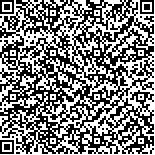下载中心
优秀审稿专家
优秀论文
相关链接
摘要

在缺乏影像等辅助数据的情况下,本文直接利用激光雷达LiDAR点云数据,提取水系边缘,并在此基础上实现基于语义分割的堤防外坡激光点云提取方法。分两步进行边坡的提取:首先获取LiDAR数据中水体边缘轮廓线,进一步获取堤防边坡的下缘线;然后以下缘线为增长基线,通过最小二乘平面拟合,利用区域增长的方法,将边坡平面提取出来,从而获取边坡脚点。
Embankment has been one of the most important measures of flood control since the ancient times. Its extraction and detection serve an important role in flood prevention. However, traditional optical images cannot extract precise embankment three-dimensional models using feature points because dikes are always surrounded by trees and roads. The airborne light detection and ranging (LiDAR) system can directly obtain high-accuracy three-dimensional information on a river basin. Dike points can be classified directly from the original LiDAR point data using the spatial semantic feature, including the slope and topological relation between the river and bank without any additional data source support. The method presented in this paper is important to automatic embankment extraction of embankment models.
This paper presents a method that performs data pre-processing, water edge judgment, and slope fitting of extracted dike points using only the LiDAR point data.
(1) The water and non-water areas are separated using echo, intensity, and point density properties. The water edge is obtained by gridding the point data. (2) The searching direction of the water edge is judged and sought. (3) The embankment points are extracted using the least square method after excluding the water edge without embankment.
The experiment data covers the cities of Changyang, Shashi, and Xianning in Hubei Province to test the validity of the algorithm process, the point densities for these three cities are 1 dots/m2, 1 dots/m2, and 2 dots/m2, respectively. The checkpoints are collected by the GPS RTK distributed randomly along the river side to verify the precision of the method used in this study. The test results are: The precision of the embankment brink extraction is less than 0.43 m, 0.48 m, and 0.3 m in Changyang, Shashi, and Xianning City, respectively, which shows that the accuracy satisfies the one-half point interval.The error of embankment elevation is less than 0.13 m, 0.3 m, and 0.08 m, respectively.
The test results show that the proposed method can successfully extract the embankment of the river using only LiDAR data based on its semantic information. Moreover, a relatively high accuracy result can be achieved when the dike structure is simple and the point data are dense.

